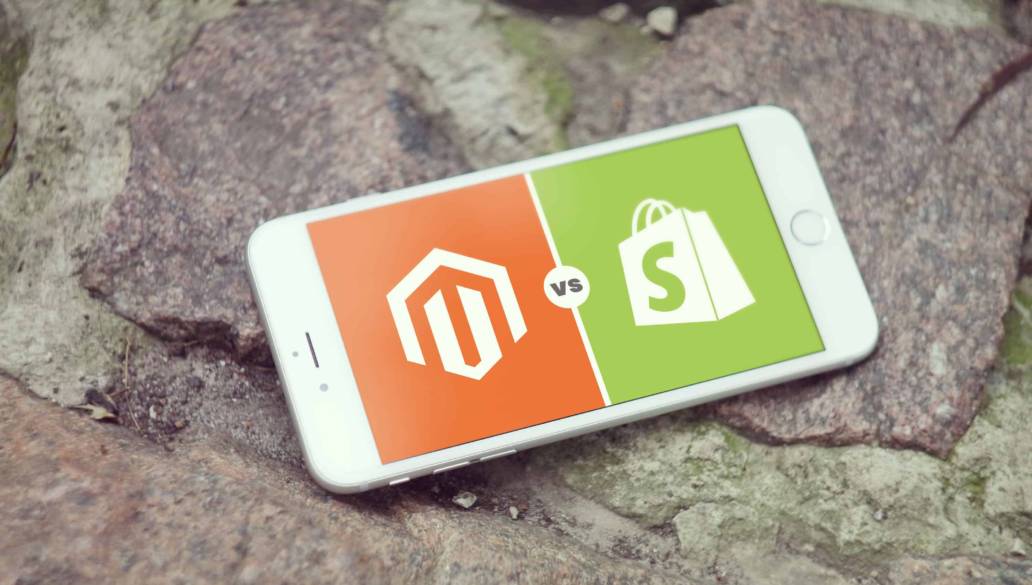With Magento 1’s end of life fast approaching, many ecommerce retailers are faced with a big decision – get left behind on an unsupported platform or make the move to something else?
Faced with this decision, you’re going to want to explore the options, so we’ve created this guide to help you look at the pros and cons of each approach.
Is doing nothing so bad?
Doing nothing is an option. Let’s face it, your site won’t stop working in June 2020. Your customers will still be able to buy and you will still be able to transact – so it’s not all doom and gloom.
But, will you be able to grow and continue on a high-growth trajectory? This is where things are likely to become less certain, especially when you consider what ‘end of life’ means for Magento 1.
- Lack of development – Magento has already ceased what it calls ‘quality fixes’ for Magento Community Editions, meaning the platform is now effectively standing still and won’t deliver any new features or updates. For a business seeking growth, this is likely to be an issue as all improvements will now need to come from your development team, and you’ll need to consider whether these are worth making on a platform that has no longevity.
- Exposure to low security – From June 2020, Magento will no longer offer security updates. This is a biggy – not just from a ‘keeping your customer’s data safe and remaining compliant’ perspective, but also from a customer-trust perspective. Any security issues are likely to be well publicised and exploited and this is a big risk with no patches forthcoming from Magento.
- Lack of extension development – With Magento 1 coming to the end of its life, extension developers have already shifted their attention to Magento 2 extensions as this is where they see their future. What does this mean for you? You’re likely to see many of your extensions maintained through the end of Magento 1’s life, but don’t expect to see much in terms of new features or extensions. With most retailers relying heavily on extensions for rapid feature development and to underpin their growth, this could be a real limiter for you.
- Lower agility to grow your business – no platform development and limited extension development = hard work to create change on your site and grow. Your new features and enhancements are likely to require manual development and become more expensive.
- Not really an option if growth is your focus – if you’re running a growth-focused business, then doing nothing isn’t really an option. Putting security issues aside (which we’d say are pretty significant on their own), running a growing ecommerce business on a platform that is becoming unsupported and facing stagnation isn’t really an option to consider.
So, that said, what options have you got?
Press the magic update button?
Perhaps the obvious route for a Magento 1 business is to migrate to Magento 2. After all, the only difference is a number, right?
Not quite. With Magento 2 sounding just like the next version, you’d be right to expect a “magic upgrade button”, or at least an easy path to upgrade. Unfortunately, that’s not the case and Magento 2 is effectively a new platform requiring you to rebuild, re-platform and migrate all of your customer and product data. You’re leaving behind all of your customised features and design (the stuff that made you grow and be unique) and essentially creating that all again.
Re-platforming sounds like a big upheaval (and it can be, if not planned properly) but it’s also a wonderful opportunity to take a fresh look at what’s out there and which platform can best underpin and drive your ecommerce growth.
Re-platforming – Magento 2 or Shopify?
There is a plethora of ecommerce platforms available, with the two most popular being Magento and Shopify.
Magento is a well-trusted platform, with many large brands including Nike, Paul Smith, Harvey Nichols and Fred Perry using it to great effect.
Shopify has until a couple of years ago been thought of more like a smaller-scale platform, so it’s worth debunking that myth straight away.
Perhaps Shopify’s biggest case study is the phenomenal Gymshark (now turning over £100m+) and with brands like Matalan, Tesla and Kylie Cosmetics also turning to the platform to support their growth, it has certainly started to look like the platform of choice for high-growth retailers.
Both platforms, of course, do a great job and allow great customisation and the ability to create the ecommerce store you need to grow your business. They do also differ in some critical areas:
- Hosting – Magento is a self-hosted solution, meaning that your business needs to run and maintain servers capable of running your store and ensuring it is fast enough for your customers. Shopify is a software as a service (Saas) platform, which means that Shopify is responsible for the hosting and this comes as part of the services it provides. Although hosting in itself isn’t overly complex, and you’d typically use an agency or partner for this, the considerations here are more about additional cost and scalability.
- Scalability – Magento was historically seen as the more scalable platform, but it’s important to understand what is meant by scalability. Looking at this in terms of scaling to meet the needs of your business (more products, more complex products, customisation), both platforms are at least on a par, with Shopify leading in many areas, in particular, multiple sales channels and in-store selling.
Thinking more about technical scalability, Shopify’s software as a service model really excels here. Regardless of the level of demand you attract through your store, the Shopify platform just swallows it up, and Shopify’s mantra of “Build your business instead of worrying about your website” rings true. On Black Friday 2017, Shopify handled $1bn in global sales, processing $1.2m sales per minute at times. Imagine the power of being able to scale your capability, without having to do a thing. - Extensibility and customisation – Magento’s extension marketplace and Shopify’s app store often hold the key to rapid feature enhancement and growth for a merchant. In Venture Forge’s growth marketing model, we rely heavily on this to rapidly test new ideas, at low cost, before investing in developing a bespoke approach for a client.
Many apps are common to both platforms, and it’s difficult to compare these like for like without doing a deep dive on the breadth and quality of apps available.
That said, the level of investment we have seen Shopify make in both its app store redesign and the unification of apps into the Shopify experience through Shopify Polaris shows how focussed Shopify is on this area of its business and in giving merchants an exceptional experience.
Where Magento 2 offers more customisation is due to its open-source nature. Because you can physically get into the code, you can technically do anything – something you cannot really do in Shopify as your code lives in Shopify’s environment and within the limits of its templating language and APIs. We’ve found it very rare where you come across something you cannot do in Shopify, or where Shopify’s approach doesn’t meet best practice, but this can be seen as a limitation of the platform. - Internationalisation – Shopify has been on the back foot with internationalisation until now, with Magento having the clear lead here through its multiple-storefronts approach. Shopify was able to do it, but often in a way involving multiple apps and multiple stores which made management quite difficult and time-consuming.
Thankfully, all that has changed for Shopify Plus customers with the announcement at Shopify Unite this year with Shopify launching a solid solution for multi-currency and localised payment gateways. Whilst this is still only on the Plus platform, the licence fees here are not prohibitive for any business with a serious international reach. - Payment options – Both platforms offer the ability to rapidly integrate most popular payment gateways but, again, Shopify excels here in both its default options and ease of configuration. Whilst Magento offers both PayPal and Authorize.net as standard, and these are great options, Shopify’s offer is far bigger, offering Shopify Pay (native credit-card processing), PayPal, Apple Pay, Google Pay and Amazon Pay.
With 60%+ of customers now buying on mobile, the ease of Shopify Pay and the native payment options from Apple and Google make mobile purchasing a breeze for your customers that you will see straight on your bottom line. - Support – Magento 2 is either supported by your development team if you’re on Community Editions, or you do get support from Magento if you’re on its enterprise platforms (but remember this starts at $22k per year). With Shopify, even on its lower-end packages you get direct access to Shopify support through email and live chat, 24 hours a day.
- Licence fees – It’s worth noting that Magento’s Community Edition has no licence fee, due to its open-source nature, whereas Shopify pricing currently starts at $29, and goes up to $299, per month for its largest standard package. What you do need to factor in here is the difference in hosting – Shopify’s software as a service model includes your hosting, whereas with Magento you need to pay for hosting separately which could be at least £150/month for a site with meaningful traffic or up to £1,000 per month at the top end.
- Development costs – If you have your own in-house development team perhaps this point is less of a concern, but as development costs from agencies are still based on time, then this should still be considered. Every site is different and costs will vary depending on the spec of your build and the amount of complexity, but on a like-for-like basis, we typically see Magento builds coming in at 3 to 5 times the cost of an equivalent Shopify build.
Ready to leave Magento 1 behind?
Come on, you were expecting a call to action somewhere right? 🙂
We make no secret of the fact that we are a Shopify Partner, and we’ve made that decision for a reason. For us, Shopify couples speed and agility with the scalable foundation you need to grow bigger, faster – even on their core products and entry-level pricing.
If you’re seriously considering your options for leaving Magento 1 behind, then please do get in touch – even if you’re not yet convinced about Shopify.
We’d love the chance to find out more about your situation and to see how Shopify can help. And if Magento 2 turns out to be right for you, we’ve got some great partners we can introduce you to that can help you there.

